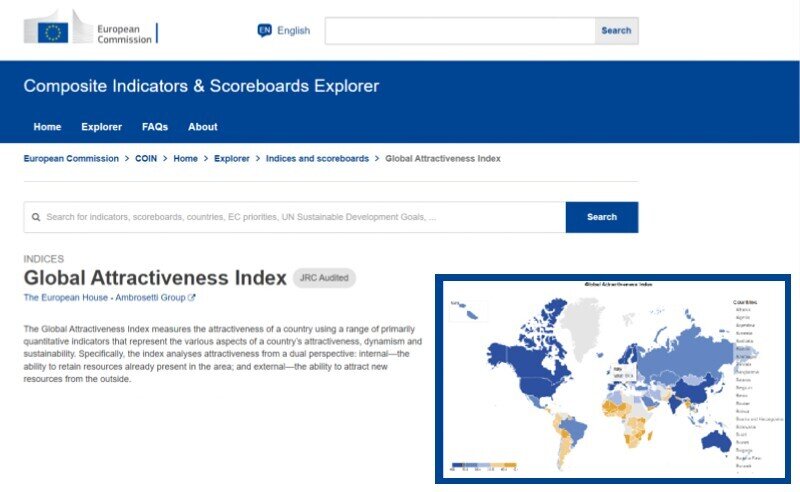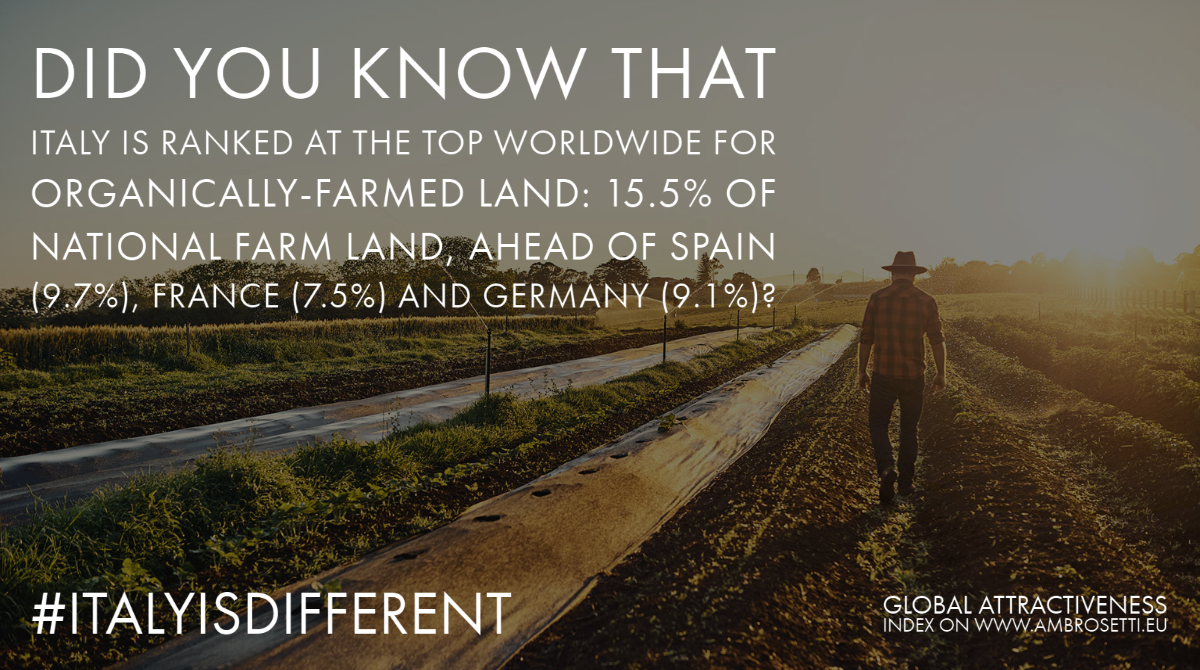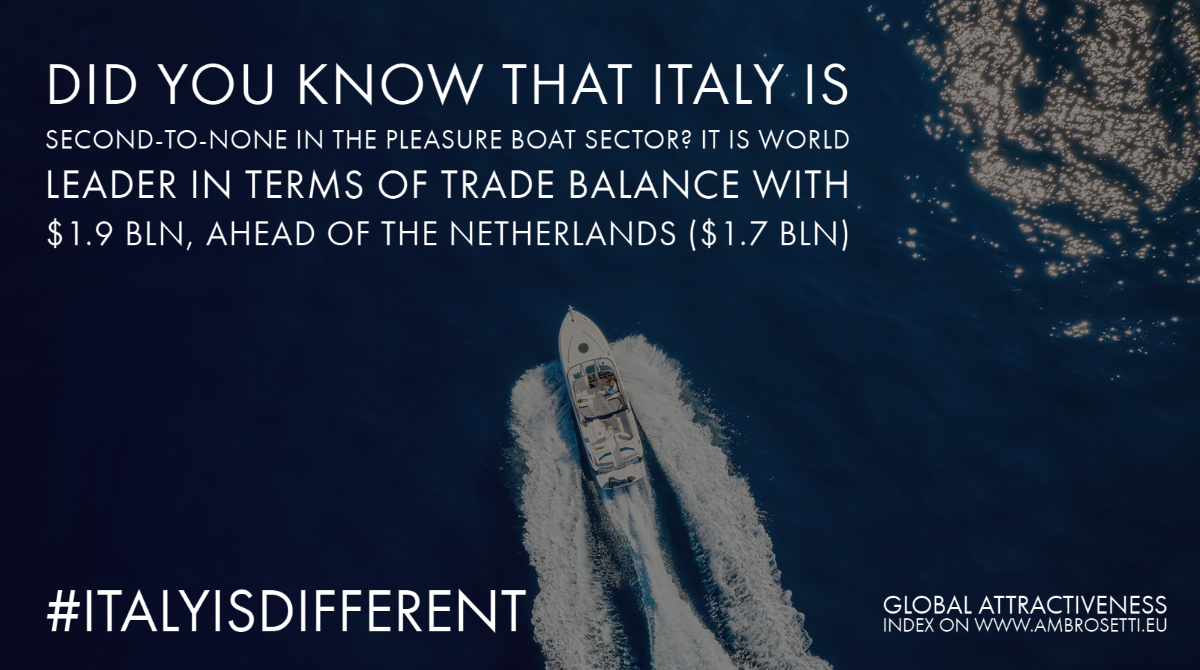A platform to measure country attractiveness and to discuss the factors and strategies that most affect it.
The GAI Index compares 148 economies globally which represent 95% of the world population and 99% of Gross Domestic Product in four macro-areas of attractiveness (Openness, Innovation, Endowment and Efficiency), four additional indexes (Dynamism, Sustainability, Growth Expectations, and Conflict Exposure, added in 2022).
Which are the most and least attractive countries in the 2024 GAI?
In 2024, the United States are ranked first, with a score of 100, followed by China (89.6) and Germany (85.0).
Italy is in the 17th place: improving by one position compared to the previous year's results and by three positions since the 2020 edition. Between 2023 and 2024 Italy also gained ground compared to 12 out of 19 of the other countries in the top-20 for attractiveness, and in particular compared to countries such as the UK (+5.2 points), Australia (+3.6 points), Germany (+2.4 points), France (+1.6 points), Canada (+1.5 points), and Japan (+0.8 points). However, Italy is confirmed as the least attractive among the G7 countries: the average score of the G7 countries is 76.6, +16.3 points compared to the Italian score.
Among major European countries, Germany shows the slowest recovery, with a projected growth of 0.2% for 2024, while Italy and France record 0.7% and 0.9%, respectively. Spain stands out with a growth forecast of 2.4% in 2024, benefiting from a strong service sector and strong domestic demand.
Outside of Europe, India emerges for its sustained economic growth, projected at 7.0% in 2024, despite political and social challenges. China shows a robust growth of 5.0% in 2024, driven by strong domestic consumption and exports, while Latin America presents a mixed picture, with overall growth projected at 1.9% in 2024.
In 2022, GAI was included in the European Commission's Composite Indicators & Scoreboards Explorer
The Index undergoes an independent audit carried out by the Centre on Composite Indicators and Scoreboards of the Joint Research Centre of the European Commission.
Explore the interactive page on the Commission's websiteThe Global Attractiveness Index research project was launched in 2016 to make available to Italian and international decision-makers an innovative country index that can offer a representative profile of the attractiveness and competitive sustainability of countries and, as a result, provide dependable information to aid in making system-wide choices about growth and optimization of the pro-business environment.
The GAI measures the attractiveness of a country using a
range of primarily quantitative indicators that represent the various aspects
of a country’s attractiveness, dynamism and sustainability. Specifically, the
GAI analyzes attractiveness from a dual perspective:
- internal—the ability to retain resources already present in the area;
- external—the ability to attract new resources from the outside.
How does the GAI guarantees data comparison over the years?
A distinctive feature of the Global Attractiveness Index is that it reconstructs its series from past data to reflect in each year’s report the updates issued by the leading international statistical bodies from which the databases are derived.
In fact, for correct comparison of the Index over time, the time series on which the indicator is built must be technically comparable and gathered using the same criteria. In some cases, the same piece of data obtained years later may be subject to re-evaluation, both because of changes in the methodology of data collection, as well as differences between an initial estimated value and the final value.
For this reason, every year we reconstruct the index's rankings of the Global Attractiveness Index covering the last seven years. Back-calculation of the Index is an important methodological approach of the Global Attractiveness Index that, on the one hand, makes it possible to take account of the changes connected with updating the time series and, on the other, guarantees the comparison over time of the KPIs and the Positioning Index (PI) for each country, providing a more representative and transparent picture of the progress made by the various economies over time.
The GAI's KPIs are subdivided into four sub-indices: a Positioning Index (PI), a Dynamicity Index (DI), a Sustainability Index (SI), and a Future Orientation Index. On the other hand, the Russian-Ukrainian Conflict Exposure Index, a short-term index introduced in the 2022 and 2023 editions, has been discontinued: two years after the outbreak of the conflict, it is less effective and relevant, precisely in light of the realignment of trade routes to and from the countries involved.
The Scientific Committee of the Global Attractiveness Index project is comprised of:
- Ferruccio De Bortoli (Columnist, Il Corriere della Sera)
- Lorenzo Bini Smaghi (Economist; former Member of the Executive Committee, European Central Bank)
- Enrico Giovannini (Scientific Director, ASviS; former Italian Minister of Infrastrucutre and Sustainable Mobility)
- Roberto Monducci (former Director of the Department of Statistics, ISTAT)
Read all the Reports
#ItalyisDifferent














